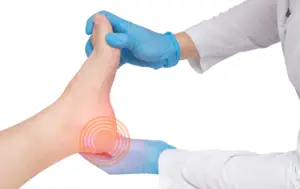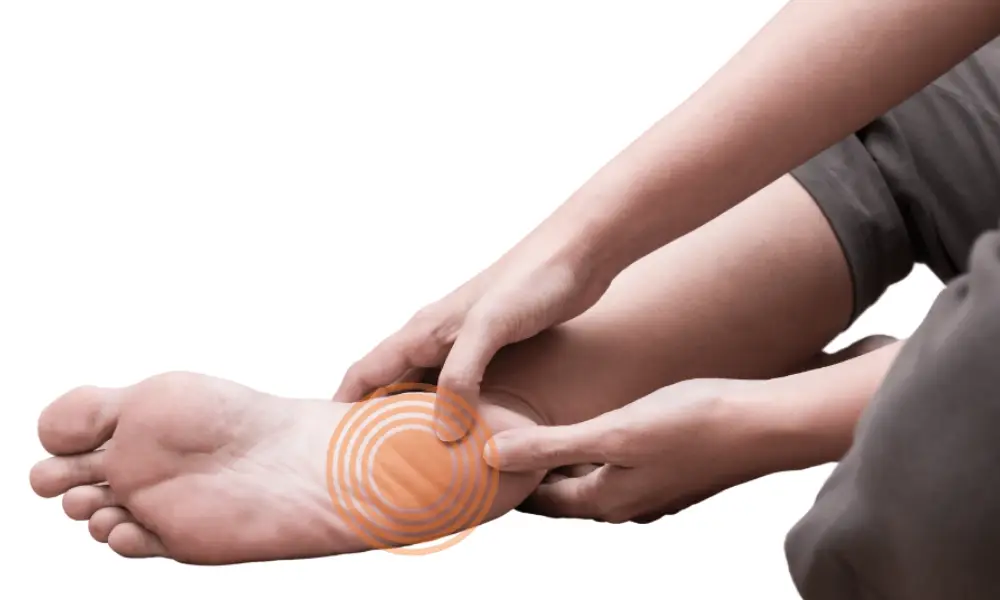An individual’s quality of your life will be badly affected if you have pain in the palm of your foot or heels when you take your first step in the morning. Plantar Fasciitis is a common cause of foot pain. It results from inflammation of a thick band of tissue that runs across the bottom of your foot and connects your heel bone to your toes.
Plantar fasciitis commonly causes stabbing-type pain that usually occurs in the morning. It might return after long periods of standing or when you stand up after sitting, as you get up and move, the pain normally decreases. People who are obese and those who wear shoes with inadequate support also have an increased risk of plantar fasciitis. This musculoskeletal condition is commonly seen in females.
Common Symptoms of Plantar Fasciitis
Heel pain with first steps in the morning
Tenderness
Night pain
Limping may present
Toe walking
Reduced range of ankle
Pain is usually worse on barefoot
Pain while climbing stairs and walking on a hard surface
Stiffness
Common Causes of Plantar Fasciitis
Pregnancy
Obesity
Work-related- long-standing jobs like teachers, traffic police, waiters, nurses, etc.
Long-distance runners
Structural foot problems- Flat foot, high arched foot, hallux valgus, etc.

Calcaneal spur
Diabetics
Improper footwears
Tight calf muscles, Achilles Tendon
When to consult your doctor or physiotherapist:
If you experience continuous pain at rest. If you experience a heel injury resulting in pain when weight-bearing. If pain persists for over a week after trying home treatments such as ice, rest, and over-the-counter pain medicine, or seeking medical care.
Treatments For Plantar Fasciitis
Physiotherapy Management
Physiotherapy management will be non-surgical, pain-free, and side-effect-free treatment. Patients need to understand the condition and importance of the approaches, such as pain management, foot care, stretching, and strengthening programs. Limiting the aggravating movements, Absolute rest, and icing the affected areas are essential to reduce the pain. IFT, US, and Shockwave therapy are the pain management modalities usually used in physical therapy. An exercise program can start after the pain gets subsided to stretch the tight and strengthen the weak muscles. Mobilizations and manipulations in manual therapy can improve the joint range of motion. Changing the footwear with a soft cushion type can protect the foot from the further chance of plantar fasciitis.
NSAID
Doctors may start treatment with non-steroidal anti-inflammatory drugs to reduce the inflammation of the plantar fascia and then will get relief from pain. If the pain persists after NSAID, they may start steroid injection to the plantar fascia. Steroids will help reduce the inflammation for about a month.
Surgical Procedure- Fasciotomy
The surgical procedure for plantar fasciitis is fasciotomy. It can be with or without the removal of heel spurs. Surgical management for plantar fasciitis will be the last option as it can result in foot instability and many other complications. Other options are open plantar fasciotomy, endoscopic plantar fasciotomy and fascial release.
Ayurvedic Treatment
In Ayurvedic treatment initially starts with padding and insoles. The primary focus is to reduce the inflammation of the fascia by avoiding barefoot walking and high-impact physical activities. The treatment is different for acute and chronic inflammation with natural herbal packs and ‘Lepas’.

Homeopathic Treatment
Homeopathic treatment focuses on reducing inflammation by avoiding strenuous physical activities that can hurt your plantar fascia. Once the inflammation goes down, the pain will get reduced. Then they will start with their medications.
Yoga
Yoga strengthens and stretches the foot and leg, which helps to ease plantar fasciitis. Some yoga poses that increase your heel pain should be avoided.
Extracorporeal Shockwave Therapy
Shockwave Therapy (ESWT) is an advanced modality used for treating musculoskeletal conditions. It’s very effective in the treatment of plantar fasciitis and heel spurs. ESWT uses sound waves (high amplitude pulses of mechanical energy) to break up infected tissues and stimulate the rapid healing processes.
If you are experiencing foot pain or any of the mentioned difficulties, please feel free to reach out to us for a consultation and assessment.

